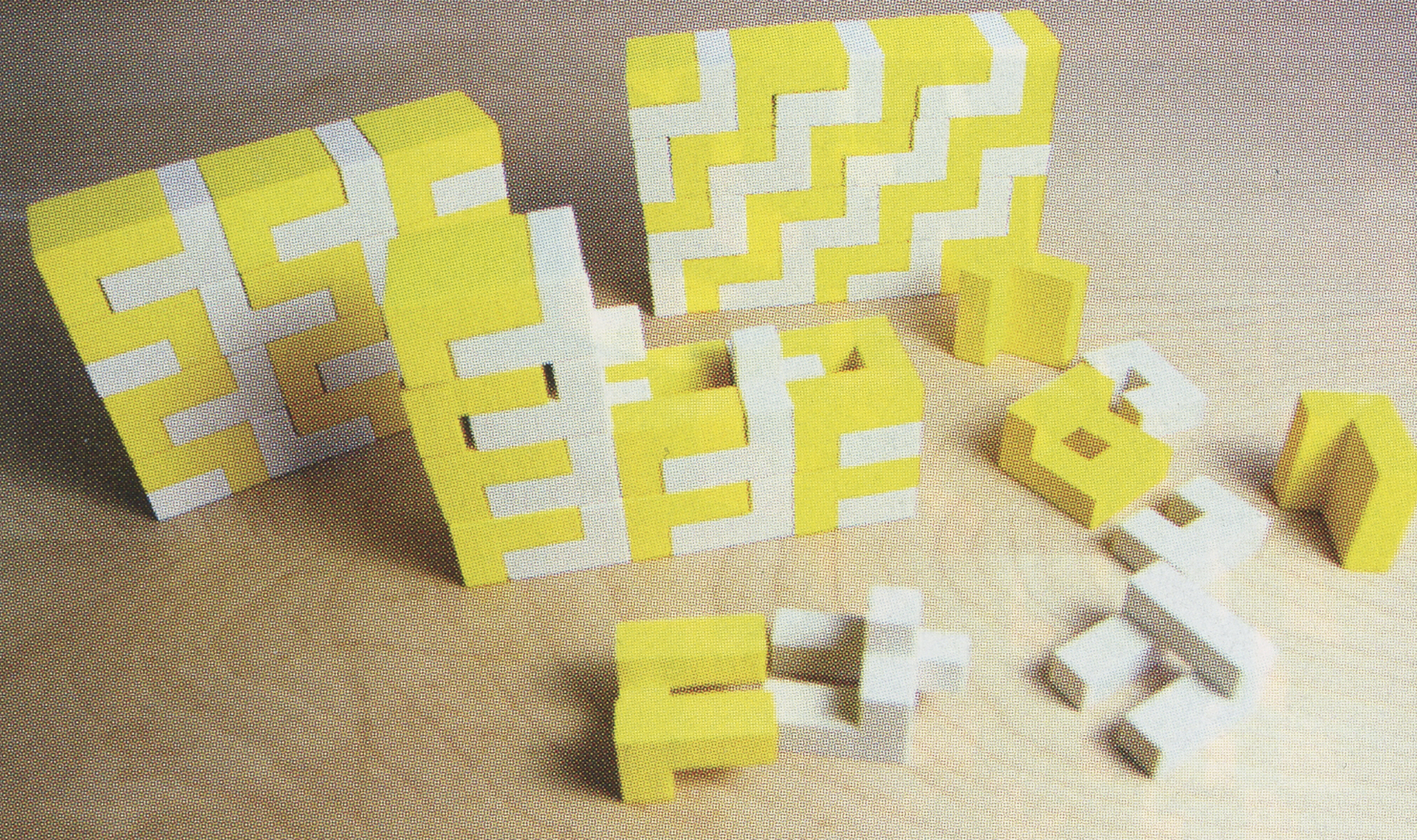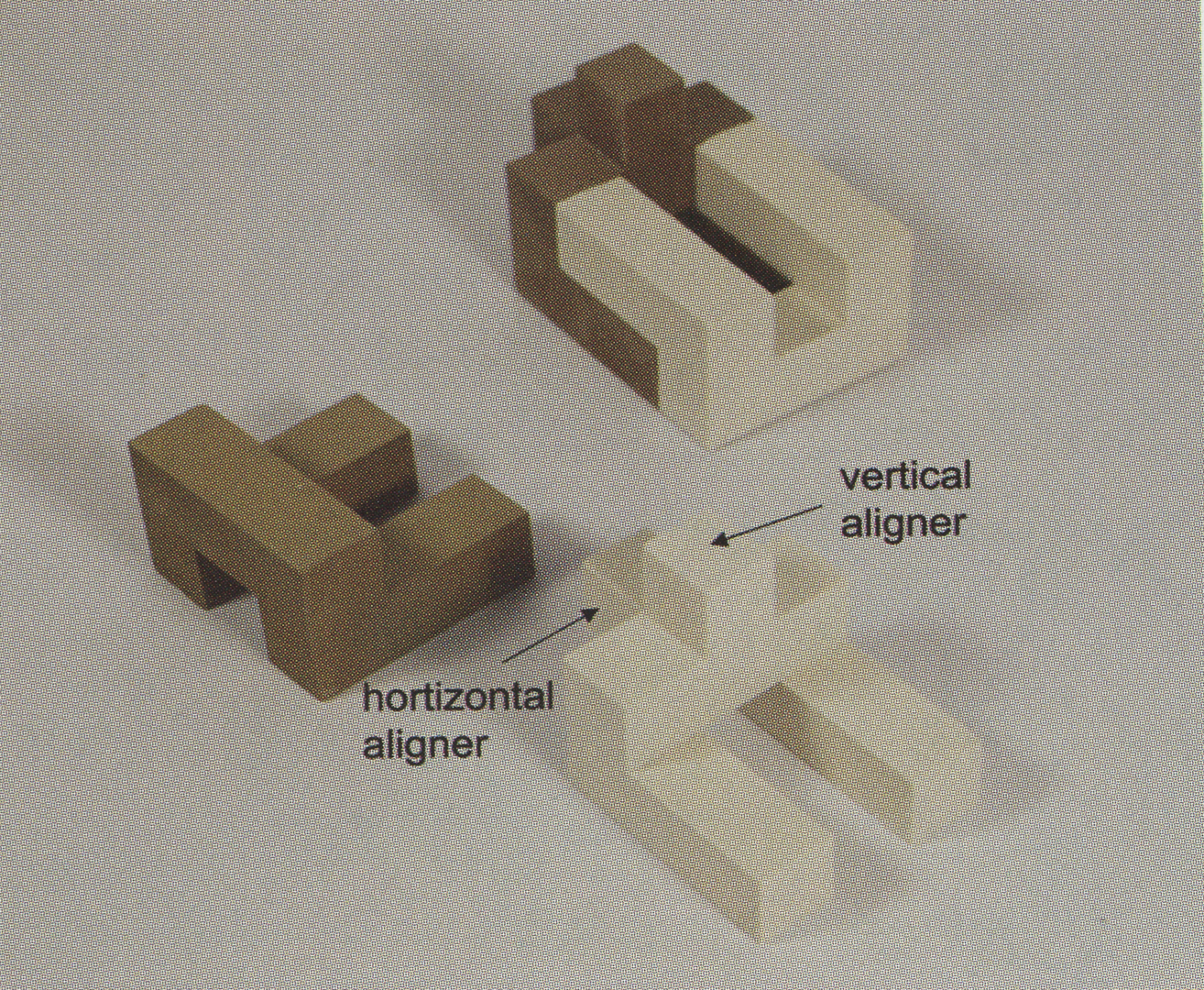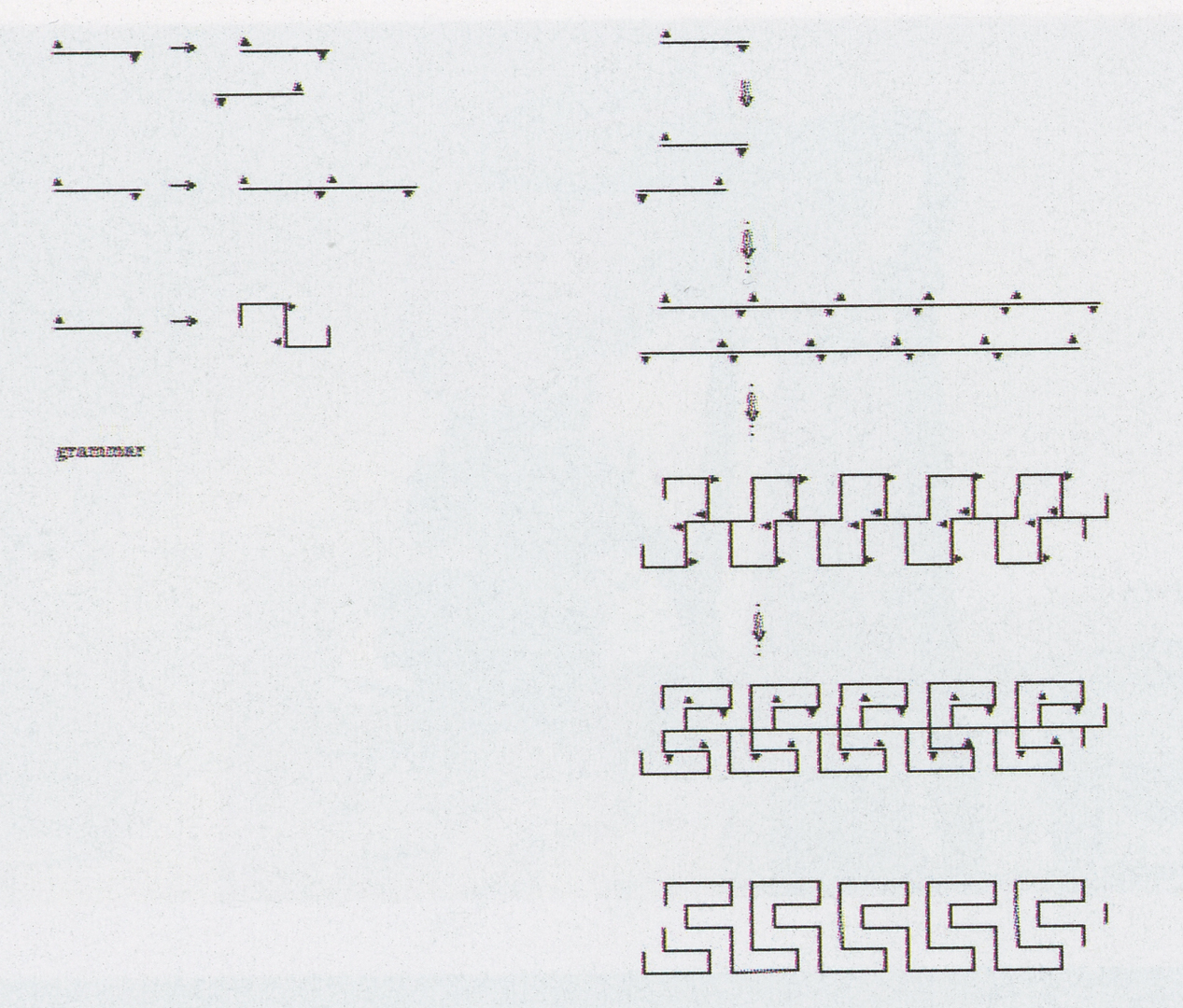Terry Knight: Visual-Physical Design Grammars
Artist(s):
Title:
- Visual-Physical Design Grammars
Exhibition:
Creation Year:
- 2008
Category:
Artist Statement:
The objective of this project is the development of new kinds of low-cost, high-quality, masscustomizable building assembly systems that provide visually rich design variations for housing and other small structures. The building systems are intended to be tailored for particular cultures and communities by incorporating local, vernacular, decorative design into the assembly design.
Two complementary areas of computational design are brought together in this work: shape grammars and digital fabrication. The visual, aesthetic aspects of the research are explored through shape grammars. The physical design and manufacturing aspects are explored through advanced digital design and fabrication technologies, and, in particular, they build on recent work on mono-material, interlocking, component-based assemblies with parts that can be fabricated with CNC machines and assembled easily by hand. The long-term objective is development of visualphysical design grammars with rules that generate complete CAD/CAM data for fabrication of full-scale components for assembly design variations.
If successful, the results of this research will lead to new solutions for economical, easily manufactured housing, which is especially critical in developing countries and for post-disaster environments. These new housing solutions will not only provide shelter, but will also support important cultural values through the integration of familiar visual design features. The use of inexpensive, portable digital design and fabrication technologies will allow local communities to be active participants in the design and construction of their homes.
Beyond the specific context of housing, visual-physical grammars have the potential to positively affect design and manufacture of artifacts at many scales, and in many domains, particularly for artifacts where visual aesthetics need to be considered jointly with physical or material requirements and design customization or variation is important.
A proof-of-concept study was initiated to establish the potential of this research. A visual, vernacular language of ancient Greek meander designs is the basis for the study. Figure 1 shows an excerpt from a grammar that generates a language of meander variations. The grammar rules generate a wide range of meander patterns (Figure 2) by stacking, shifting, and reflecting rows of meanders. This twodimensional visual language was then translated into a three-dimensional building system.
The components of the system are uniquely designed “meander bricks” (Figure 3). The components have integrated alignment features so that they can be easily fitted and locked together manually without binding materials. The meander bricks were 3D printed at desktop scale with a layered manufacturing machine to assess the visual and structural feasibility of the system. Figure 4 shows a wall being assembled. Figure 5 shows some of the many different meander-wall patterns that can be generated with the system.
The next steps of this study include construction of a full-scale mockup of a wall section and development of an automated visual-physical grammar for machine fabrication of full-scale components for wall-pattern variations. This research will undoubtedly open up new questions and provide the foundations for the longer-term, broader project on assembly systems for complete houses and other small-scale structures
Other Information:
We are grateful for the support we are receiving for this project through a SGER grant from the National Science Foundation (grant number 0748992).









